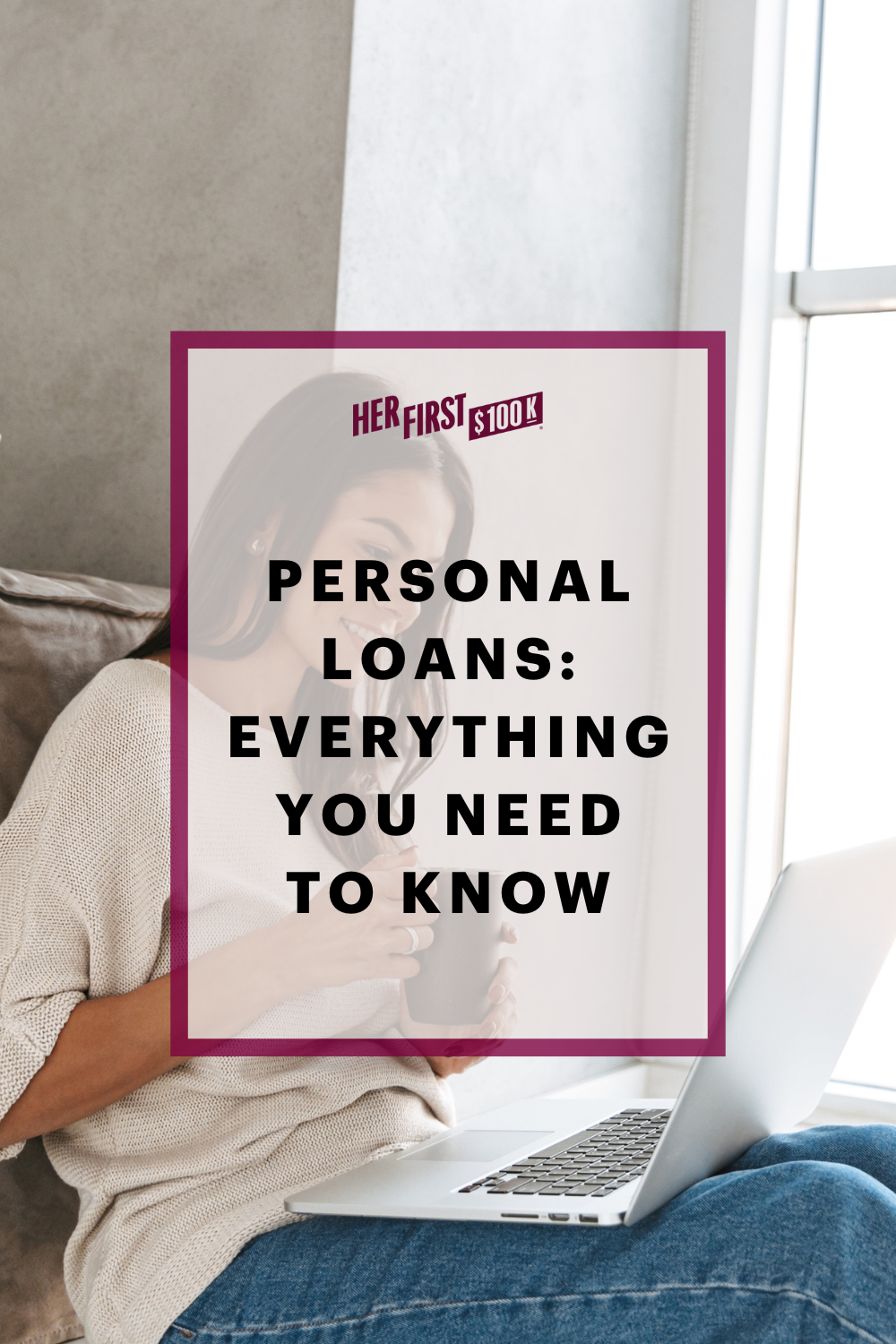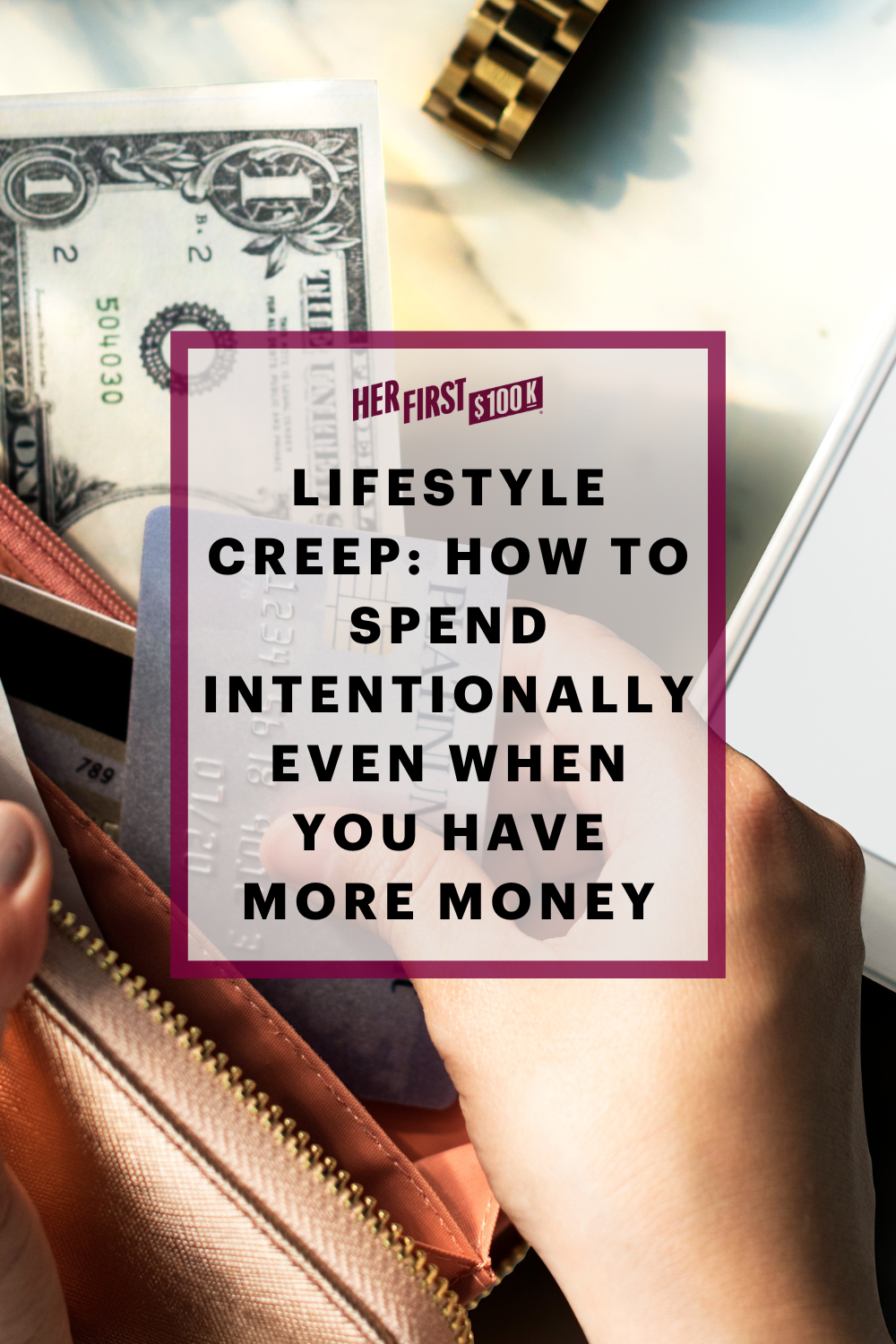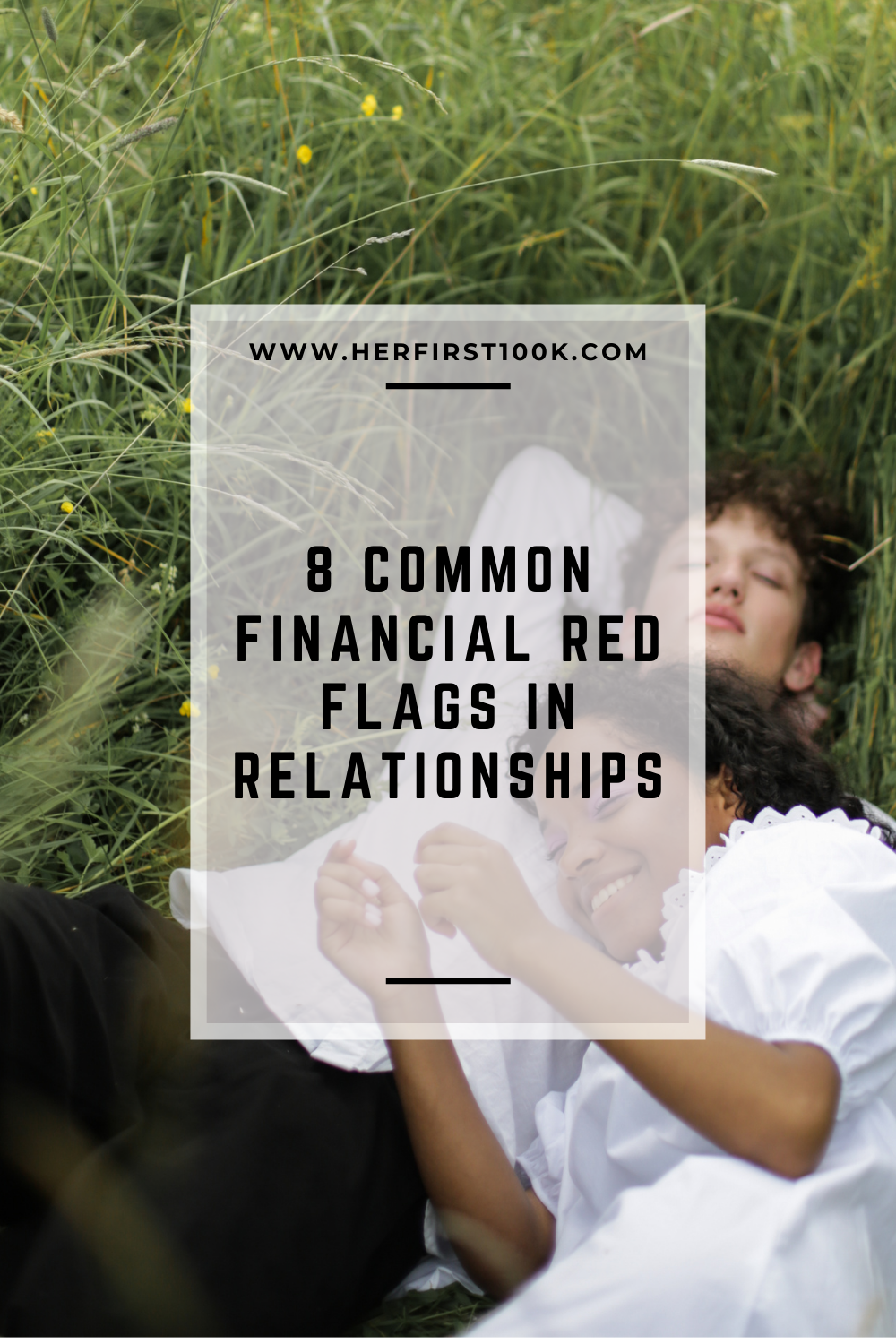The following article may contain affiliate links or sponsored content. This doesn’t cost you anything, and shopping or using our affiliate partners is a way to support our mission. I will never work with a brand or showcase a product that I don’t personally use or believe in.
If you’re facing a mountain of debt or in the midst of a money crisis, you might have heard that a personal loan can help. It’s true that personal loans can be a great tool in your financial arsenal, BUT they can also support negative cycles of spending.
So what’s a financial feminist to do??
While personal loans can be a complicated money topic for folks, they’re like any other money tool: whether they’re helpful largely depends on how you use them.
It’s not “good” or “bad” to get a personal loan–it’s all about what’s right for you.
While I can’t tell you what to do (and this isn’t financial advice), I can walk you through how to make the decision for yourself.
But first…
What is a personal loan?
A personal loan is a loan you take out from a bank, credit union, or other lender that doesn’t specify how you (the borrower) will use the money, which means you can use the money for a variety of expenses.
There are two types of personal loans—secured and unsecured.
- Secured loans require some form of collateral in order to borrow money. Collateral could be cash from a savings account or a physical asset like a car or a boat. That way, if you don’t pay back your loan, the lender could seize your car or cash savings to take care of the debt. Because of the collateral, secured loans might get you lower interest rates.
- Unsecured loans don’t require collateral, so they tend to be more expensive to borrow because they often have higher interest rates.
Personal loans come with a fixed term (how long you’ll take to pay it back) and a fixed annual percentage rate (APR). For example, you might take a $10,000 personal loan with a two-year term (meaning they expect you to pay it back in two years) at a 10% fixed interest rate.
What should you use a personal loan for?
Remember, personal finance is personal, and you get to make the decisions for yourself.
Personal loans are a tool you can use to help you take care of a financial problem rather than a shortcut to paying for big-ticket items or experiences.
For example, if you’re struggling to pay off your high-interest credit card debt, taking out a personal loan with a lower interest rate could be a good strategy to save money.
Let’s explore this. Say you have $10,000 in debt from a credit card with a 25% interest rate. Rather than being stuck with that high interest rate while you’re paying down your debt, you could take out a personal loan with a lower interest rate and pay off your high-interest credit card debt with the personal loan. That way, instead of paying 25% on $10,000, you’re only paying 10% on $10,000.
Keep in mind that the interest rate on your personal loan would have to be meaningfully lower than your credit card interest rate for this to make sense.
You can think of it like transferring your debt to a more favorable interest rate so you’re not paying quite so much in interest as you pay it off.
Another time I would consider a personal loan is if you are facing a financial hardship, like a big medical bill or job loss, and don’t have an emergency fund (aka 3-6 months of living expenses set aside in a HYSA).
If you would need to put your living expenses on a credit card, it may make sense to use a personal loan instead, in addition to taking other action like lowering your spending (where possible).
What should you NOT use a personal loan for?
Personal loans shouldn’t be used to fund a lifestyle you can’t afford.
I get it—weddings are expensive, and a personal loan might feel like a better way to pay for your dress than whipping out your AmEx. And there’s some truth to that—if you know you’re going to need to pay for items using a high-interest credit card that you won’t be able to pay off right away, then getting a personal loan might make more sense.
But I would tell you to be extremely intentional and cautious about using a personal loan for non-essential purposes.
REALLY want to see Beyoncé on her next tour? Start that sinking fund or dedicated HYSA bucket now.
I also don’t typically suggest using a personal loan to pay off student loans. Student loans usually have pretty low interest rates, so they’re not worth paying off with personal loans (unless you find a personal loan that happens to have a lower interest rate than your student loan, which is fairly unlikely).
When is it best to use a personal loan instead of a credit card?
If you’re trying to decide whether you should put a big purchase on a credit card or take out a personal loan, consider 1) if the purchase is necessary and 2) how long you think it will take you to pay it off.
I feel like we’ve covered the “don’t use a personal loan for a spontaneous trip to Bali,” so let’s talk about payment length.
If you’re able to pay off the amount within a month or two to avoid paying credit card interest, putting large purchases on your card is totally fine. What’s not great is if you have to leave a big balance on your card and then get saddled with paying interest for however long it may take to pay it off.
If you think it’s going to take you longer to pay it off (more than a month or until your next credit card billing cycle), then a personal loan might be worth considering. One major benefit to personal loans over credit cards is how they collect interest.
Rather than compounding interest, which is how credit cards collect interest, personal loans collect “simple interest,” which means your loan won’t compound the same way credit card debt does.
To better understand how credit card interest works, I recommend this article.
It’s also important to note that some lenders actually make you pay a fee for paying the loan off early (this pisses me off to no end) so you’re locked into paying that interest regardless of how quickly you have the means to pay it off.
How do you get a personal loan?
You can apply for a personal loan at a bank, credit union, or other lender. They’ll take into consideration things like your credit score, income, and your debt-to-income to decide if you’re eligible.
If you’re approved, they’ll deposit the money into your bank account and you can use the money for anything you want. You’ll then be responsible for monthly payments to pay off the loan.
Where should you get a personal loan?
A lot of banks and credit unions will offer personal loans, and it’s important to shop around before committing to one lender.
You can find my personal recommendation here. There are a few reasons I’m a fan:
- Low fixed-rate interest
- Loans range from $5,000 to $100,000
- No early-payoff fee
- No origination fee (also known as an application fee)
- FDIC-insured
Making the right decision for you
I’ve said it a million times, but only you can make the choice on whether a personal loan is right for you.
And you know what else?
I have full confidence in your ability to make this choice.
Members of the HFK community have used personal loans to tackle their high-interest debt and breathe easier. THAT is the reason I want you to have money–to have the choices and freedom to build a better, less stressful life.
Now go out there and make the money choices for you.
Ready to feel financially whole?
For the first time EVER, I’m teaching ALL the strategies that have helped countless women save money, pay off debt, and grow their net worth (but really, feel happier, healthier, and more f*cking powerful).
In The $100K Club, you’ll get in-depth teaching from me, alongside every template I use to manage my own money, PLUS a community of champions to keep you accountable.



